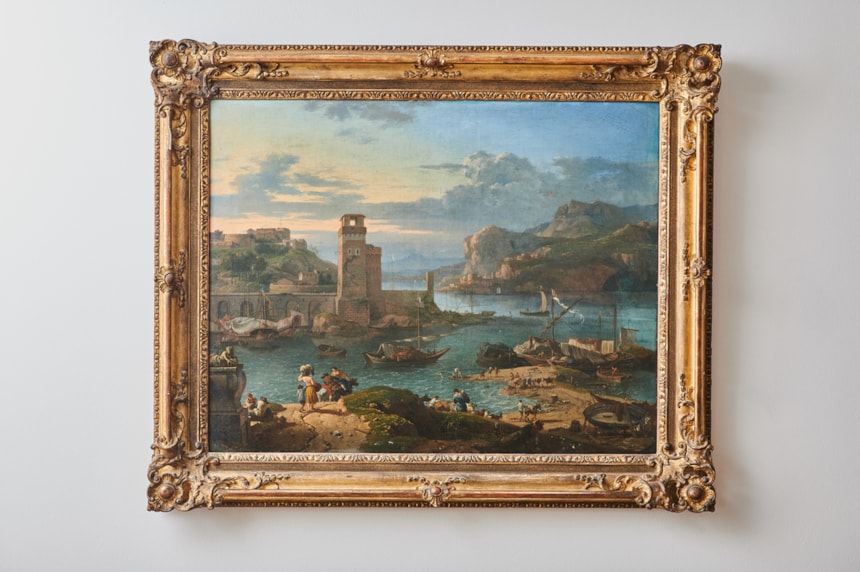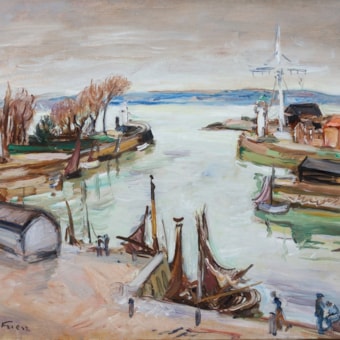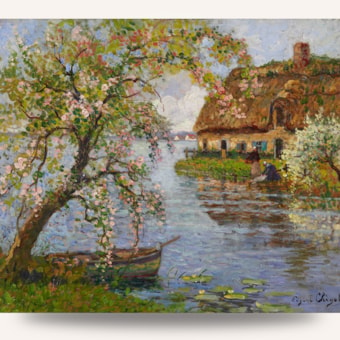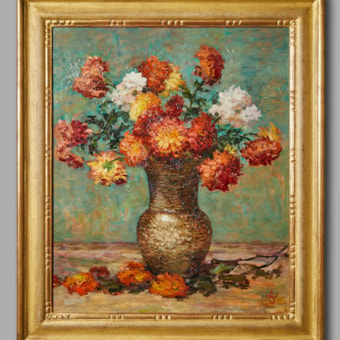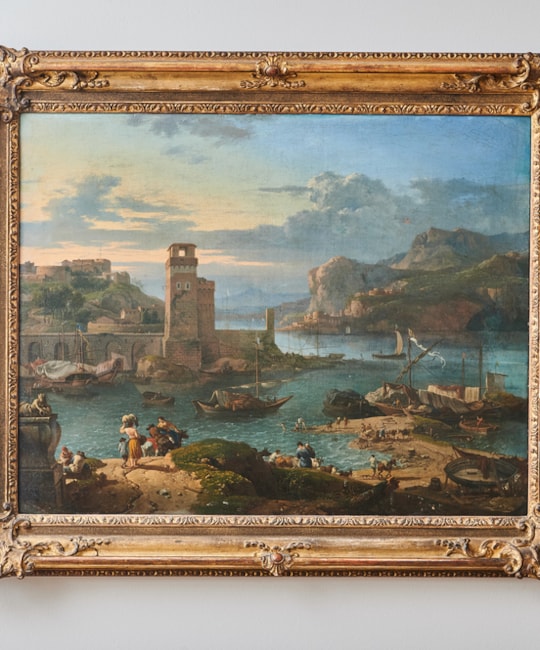Ref: 2538
Harbor Scene with Figures
Ref: 2538
Harbor Scene with Figures
Circa 1700
Oil on canvas
73 x 92 cm (28³/₄ x 36¹/₄ inches)
Oil on canvas
73 x 92 cm (28³/₄ x 36¹/₄ inches)
Provenance:
Private collection Hesse
Literature:
Giuliano Briganti, Ludovica Trezzani, and Laura Laureati: The Bamboccianti. Painters of everyday life in Rome in the 18th century. Bozzi, Rome 1983.David A. Levine and Ekkehard Mai (eds.): The Bamboccianti. Dutch Rebel Painters in Baroque Rome. Electa Editrice, Milan 1991. Exhibition at the Wallraf-Richartz Museum, Cologne, and the Central Museum of the City of Utrecht, Utrecht.
Katharina Weick-Joch: Cultural Transfer in 17th-Century Rome: The Painting of the Bamboccianti. arts + science, Weimar
Description: Bambocciade (Italian: bambocciata) was originally a derogatory term for a style of genre painting from Rome.
The first of the smaller-format Bambocciade paintings, which depict scenes from popular life in a very crude manner and contrast the "noble" Baroque classicism of the time with figures of beggars, vagrants, and small-time artisans, were by the Dutch painter Pieter van Laer. He lived and worked in Rome and, legend has it, was nicknamed "Bamboccio" (rag doll) because of his appearance. During his stay in Rome, a group of Flemish and Dutch painters gathered around him, calling themselves "Bamboccianti." An important role model for this group, alongside van Laer, was Michelangelo Merisi da Caravaggio. Initially, the Bamboccianti included Andries, Jan Both, Karel Dujardin, Jan Miel, Johannes Lingelbach, and the Italian Michelangelo Cerquozzi. Frenchman Sébastien Bourdon was also associated with the loose artist group at the beginning of his career. Other Bamboccianti artists included Michiel Sweerts, Thomas Wijck, Dirck Helmbreker, Jan Asselijn, Anton Goubau, Willem Reuter, and Jacob van Staverden. Van Laer's painting style draws on a long tradition and can be associated with, among others, Hieronymus Bosch, Adriaen van Ostade, David Ryckaert, David Teniers the Younger, and David Teniers the Elder.
The first of the smaller-format Bambocciade paintings, which depict scenes from popular life in a very crude manner and contrast the "noble" Baroque classicism of the time with figures of beggars, vagrants, and small-time artisans, were by the Dutch painter Pieter van Laer. He lived and worked in Rome and, legend has it, was nicknamed "Bamboccio" (rag doll) because of his appearance. During his stay in Rome, a group of Flemish and Dutch painters gathered around him, calling themselves "Bamboccianti." An important role model for this group, alongside van Laer, was Michelangelo Merisi da Caravaggio. Initially, the Bamboccianti included Andries, Jan Both, Karel Dujardin, Jan Miel, Johannes Lingelbach, and the Italian Michelangelo Cerquozzi. Frenchman Sébastien Bourdon was also associated with the loose artist group at the beginning of his career. Other Bamboccianti artists included Michiel Sweerts, Thomas Wijck, Dirck Helmbreker, Jan Asselijn, Anton Goubau, Willem Reuter, and Jacob van Staverden. Van Laer's painting style draws on a long tradition and can be associated with, among others, Hieronymus Bosch, Adriaen van Ostade, David Ryckaert, David Teniers the Younger, and David Teniers the Elder.
you may also like

